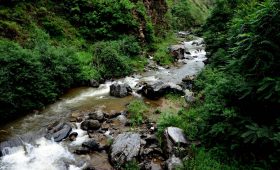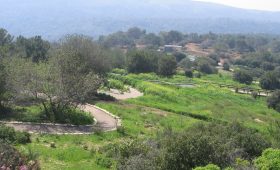Amboro National Park: A Guide to Bolivia’s Natural Wonder
Location and Overview
Amboro National Park is situated in central Bolivia, spanning the departments of Santa Cruz and Cochabamba. Covering approximately 4,425 square kilometers, it is renowned for its rich biodiversity. The park’s landscape is defined by dramatic elevation changes, ranging from 300 meters to 3,338 meters above sea level. Originally established as the Reserva de Vida Silvestre German Busch, it became a national park in 1984.
Flora and Fauna
The park boasts over 3,000 plant species, including many endemic varieties. Visitors will find a forest of giant ferns and numerous orchid species. The park is home to more than 175 mammal species, such as spectacled bears, pumas, ocelots, and jaguars. Birdwatchers can spot over 900 bird species, including the military macaw and the Andean condor. The park’s rivers and streams host unique amphibians and fish, like the pacu, a non-aggressive relative of the piranha.
Best Time to Visit
Plan your visit during the dry season, from May to October, when the weather is more predictable and trails are accessible. The park’s climate varies significantly with elevation, with highland rainforests receiving up to 4,000 millimeters of rain annually, while lowland areas get about 1,400 millimeters.
Getting There
Fly into Viru Viru International Airport in Santa Cruz. From there, Amboro National Park is about 57 kilometers northwest via the Carratera Las Cruces. The drive takes approximately 1.5 hours. Be prepared for rural dirt roads that can be muddy and full of potholes; a 4WD vehicle is recommended.
Local Transportation
Once in the area, hiring a local guide is advisable. Guides offer valuable insights into the park’s trails and wildlife, enhancing both safety and the quality of your experience.
Exploring Amboro National Park
Hiking is a popular activity, with trails for various skill levels. The El Refugio trail offers a moderate challenge through cloud forests, while the Puma trail provides panoramic mountain views. For a more relaxed experience, consider guided wildlife tours or birdwatching excursions.
Accommodations
While there are no accommodations within the park, the nearby town of Samaipata offers a range of options, from guesthouses to eco-lodges. For those seeking a more immersive experience, consider camping at Mataracu Tent Camp in Villa Yapacaní.
Safety Considerations
Be aware of potential landslides and localized flooding, especially during the wet season. Always follow local advice and stay informed about weather conditions.



